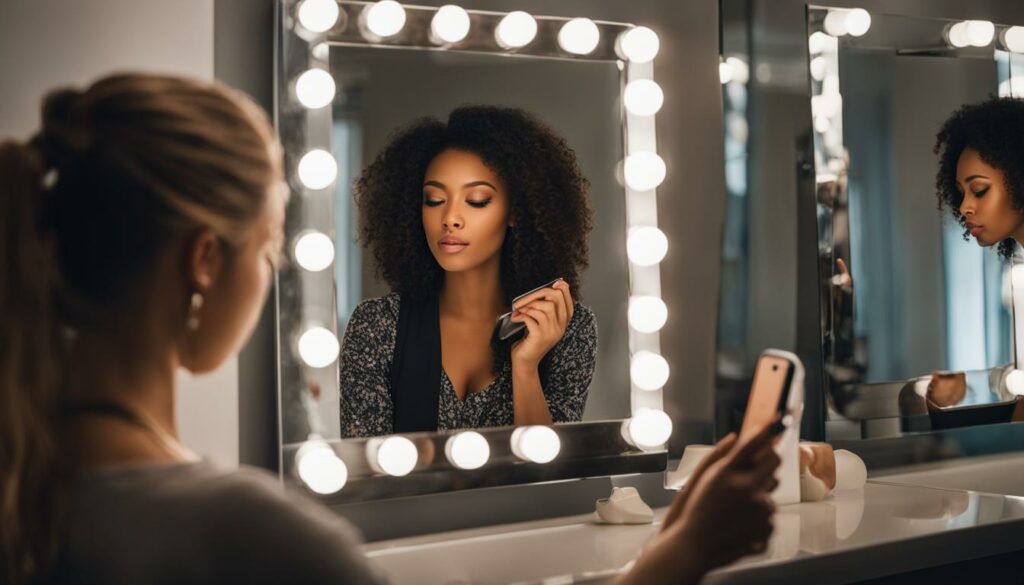In today’s society, social media plays a significant role in shaping our perceptions and ideals of beauty. It has become a platform where appearance is heavily emphasized, and unrealistic body standards are promoted. Research suggests that increased social media use, particularly engagement in appearance-related behaviors, may contribute to body dissatisfaction among adolescents. Body dissatisfaction is not just a superficial concern; it can have detrimental effects on mental health, leading to low self-esteem and even eating disorders.
Social media platforms are flooded with images and messages that emphasize the importance of looks and present unrealistic body ideals. This constant exposure can distort our perception of beauty and intensify negative self-perceptions.
However, it’s crucial to remember that the impact of social media on body image is still a topic of debate. While some studies suggest a strong correlation between social media use and body dissatisfaction, others present inconsistent findings. Thus, it’s essential to dive deeper into this issue and explore how we can foster a healthier body image on social media.
In this article, we will examine the influence of social media on body image perception, coping strategies for dealing with challenging content, and the role of gender in social media’s impact on body image. We will also explore the power of promoting body positivity on social media and the need for further research and interventions in this field.
By delving into these aspects, we aim to shed light on the complex relationship between social media and body image. Together, we can work towards promoting a healthier body image on social media platforms, fostering acceptance, diversity, and body positivity.
The Impact of Social Media on Body Image Perception
Research suggests that social media plays a significant role in shaping our perception of body image. By emphasizing the importance of appearance and promoting unrealistic body ideals, social media can influence how we see ourselves and others. This influence is fueled by sociocultural factors, as social media platforms are filled with idealized body-related content that sets specific standards for both men and women.
The internalization of these body ideals and the tendency to compare ourselves with others on social media can contribute to feelings of body dissatisfaction. Adolescents, in particular, are vulnerable to the negative impact of social media on body image perception. Girls, who tend to engage more in appearance-related behaviors on social media, are especially influenced by feedback indices such as “likes” and “comments.”
However, it is important to note that the extent of social media’s influence on body dissatisfaction is still a topic of debate. While some studies suggest a strong relationship between social media use and negative body image, the evidence is inconsistent. More research is needed to fully understand the complex interplay between social media and body image perception.
“Social media platforms like Instagram and Snapchat contain a profusion of idealized body-related content that promotes specific body ideals for both men and women.”
The Role of Sociocultural Factors
One of the key factors contributing to the impact of social media on body image perception is the sociocultural context. Sociocultural theories posit that social media platforms emphasize the importance of appearance and exert pressure to conform to unrealistic beauty standards. Consequently, individuals may internalize these body ideals and engage in appearance comparisons, which can lead to feelings of body dissatisfaction.
It is crucial to recognize that social media’s influence on body image perception is not solely determined by personal characteristics but is also shaped by the broader sociocultural environment. This highlights the need for a holistic approach to address the negative impact of social media on body image and promote a healthier and more positive perception of ourselves.

Exploring Body Dissatisfaction
Body dissatisfaction is a significant concern, particularly among young women, and is associated with various mental health issues. Social media platforms exacerbate this problem by promoting unrealistic beauty standards and perpetuating a narrow definition of attractiveness. Constant exposure to carefully curated and edited images on social media can contribute to negative self-perception and decreased body satisfaction.
It is important to recognize that body dissatisfaction is a multifaceted issue influenced by numerous factors, including social media. By understanding the role of social media in perpetuating body dissatisfaction, we can work towards developing interventions and strategies to promote a more positive body image both online and offline.
Coping Strategies for Body Image on Social Media
Adolescents face unique challenges when it comes to navigating body image on social media. However, there are several coping strategies they can employ to protect their self-esteem and foster a healthier relationship with their bodies. One such strategy is avoiding negative content. By consciously choosing to steer clear of accounts or posts that promote unrealistic body ideals or trigger feelings of inadequacy, adolescents can create a more positive digital environment for themselves.
Another effective coping strategy is actively selecting positive content. This involves purposefully seeking out accounts and posts that promote body positivity, self-acceptance, and diversity. By surrounding themselves with uplifting and inclusive content, adolescents can counteract the negative messages often found on social media and cultivate a more balanced perception of beauty and body image.
The importance of critically evaluating content
“It’s crucial for adolescents to critically evaluate the content they consume on social media,” says Dr. Smith, a leading expert in body image psychology. “They should question the authenticity and motives behind the images they see, recognizing that many have been edited or manipulated. By doing so, they can develop a more discerning eye and a healthier perspective on beauty.”
To develop effective coping strategies, it is essential for adolescents to critically evaluate the body-related content they encounter on social media. This means questioning the authenticity and motives behind the images they see, recognizing that many have been edited or manipulated to fit certain beauty standards. By developing a more discerning eye, young individuals can protect themselves from unrealistic ideals and reduce the impact of social media on their body image.
By employing these coping strategies, adolescents can navigate social media in a way that promotes a healthier body image. Avoiding negative content, selecting positive content, and critically evaluating the content they consume are powerful tools that empower young individuals to have a more positive relationship with their bodies in the digital age.
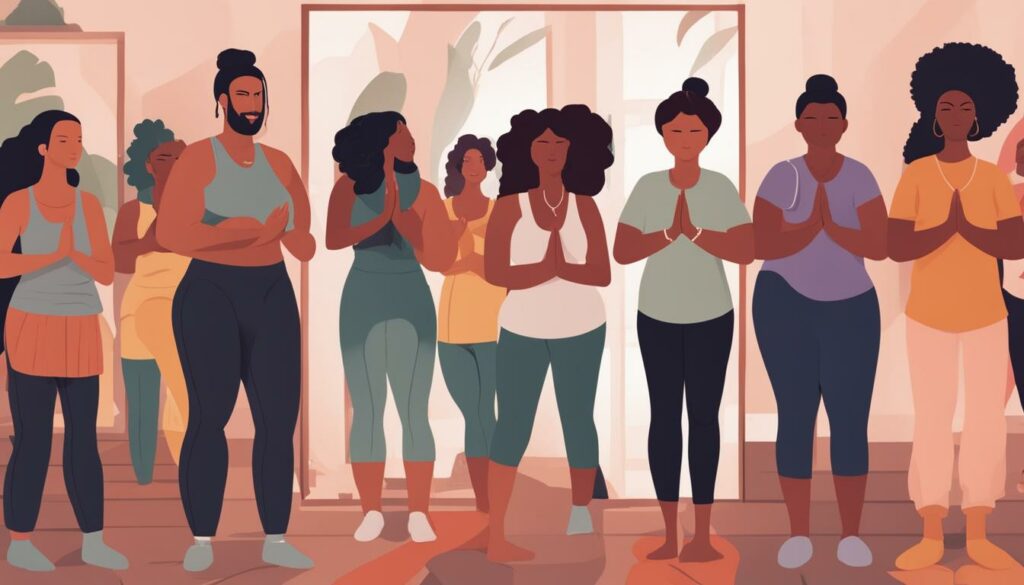
Gender Differences in Social Media’s Impact on Body Image
When it comes to the impact of social media on body image, it’s important to consider the differences between genders. Research has shown that girls tend to be more negatively affected by social media in terms of body image perception and body dissatisfaction. They engage more in appearance-related behaviors and are more invested in and influenced by feedback indices such as “likes” and “comments” on social media platforms.
On the other hand, boys perceive social media as a more positive influence on their body image. They tend to endorse and strive for the body ideals portrayed on social media, despite acknowledging their unrealistic nature. Boys also exhibit greater positive agency over their bodies and social media use, employing more active coping styles to protect their body image perception.
While recent meta-analyses suggest that the magnitude of social media’s influence on body image is similar for both boys and girls, it’s important to note that methodological issues in the literature limit the strength of this relationship. Further research is needed to better understand the gender differences in social media’s impact on body image and to explore the specific factors that contribute to these differences.
The Role of Peer Comparison
“Comparisons with celebrities, sports stars, and peers who embody these ideals on social media can contribute to feelings of body dissatisfaction.”
One possible explanation for the gender differences in social media’s impact on body image is the role of peer comparison. Girls, in particular, have been found to engage in more appearance-related behaviors on social media and are more influenced by feedback indices. This constant exposure to idealized body-related content and the pressure to conform to societal beauty ideals can contribute to feelings of body dissatisfaction.
It’s crucial to foster a healthier body image on social media by promoting body positivity, challenging unrealistic beauty standards, and featuring more diverse representations of appearance. By creating a less harmful environment for body image, we can help improve body satisfaction for both boys and girls. It’s also important to continue conducting research and developing interventions that aim to enhance our understanding of social media’s impact on body image and improve the overall well-being of individuals in the digital age.
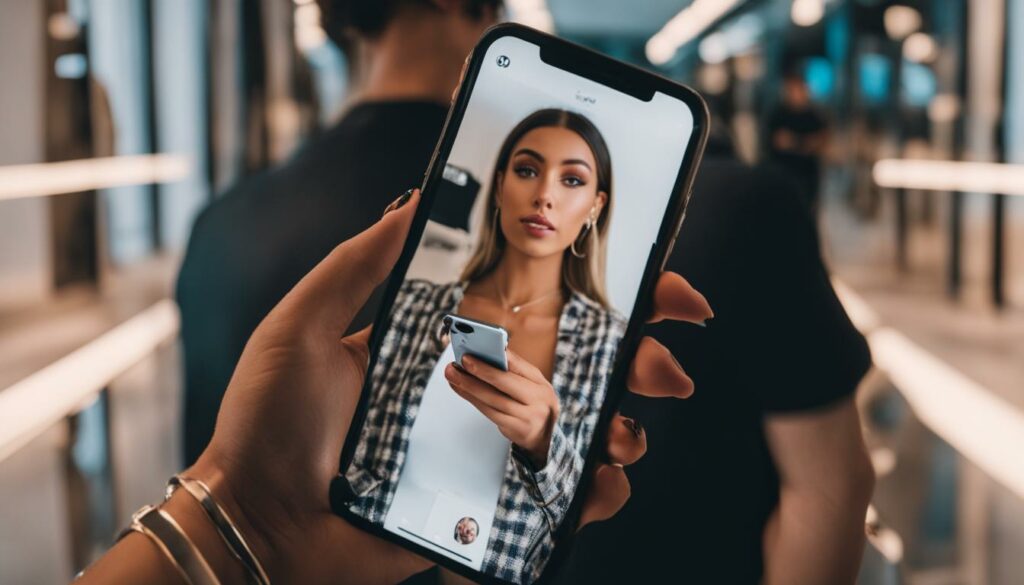
Promoting Body Positivity on Social Media
Social media has a significant impact on our body image perceptions, often promoting unrealistic beauty standards that can lead to body dissatisfaction. However, we have the power to challenge these standards and foster a more inclusive and accepting environment on social media.
One way to promote body positivity is by challenging beauty standards. By showcasing diverse body types, ethnicities, and abilities, we can challenge the notion that there is only one ideal body type. Celebrating and embracing our differences not only promotes acceptance but also encourages self-love and confidence.
“Body positivity is all about embracing and loving yourself, no matter your size, shape, or appearance. It’s about recognizing that our worth is not defined by our physical appearance but by who we are as individuals.”
Incorporating body positive content into our social media feeds can also make a significant impact. By following accounts that promote body acceptance and self-love, we can expose ourselves to uplifting and empowering messages that counteract the negative influence of unrealistic beauty standards.
Remember, social media platforms have the potential to be powerful tools for change. By actively participating in promoting body positivity, challenging beauty standards, and embracing diversity, we can create a more inclusive and empowering online community.
Representing Diversity in Social Media Content
Representation matters. When it comes to body image, seeing a variety of body types, skin tones, and abilities in social media content can have a profound impact on our self-perception. By showcasing diverse individuals, social media can help challenge the narrow beauty ideals that often dominate our feeds.
It’s crucial for social media platforms to prioritize diversity representation in the content they promote. By incorporating algorithms that showcase diverse content, they can amplify voices that have traditionally been marginalized and combat the harmful effects of unrealistic beauty standards.
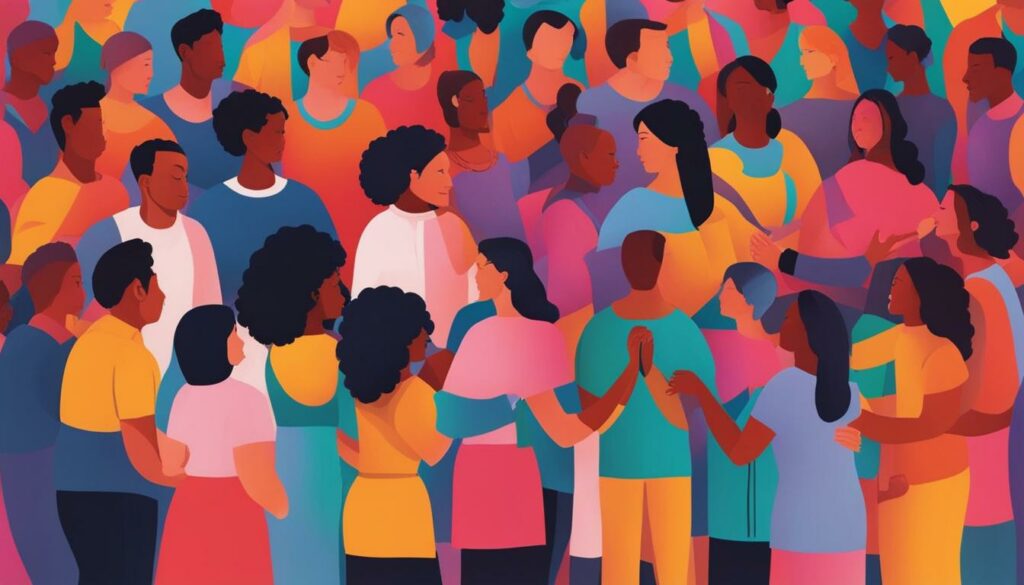
Together, we can create a social media landscape that celebrates authenticity, promotes acceptance, and fosters positive body image. Let’s challenge the beauty standards, diversify our feeds, and empower ourselves and others to embrace our bodies with love and acceptance.
The Role of Social Media in Body Dissatisfaction
Social media plays a significant role in shaping body dissatisfaction, which can have detrimental effects on mental health and self-esteem. The constant exposure to edited and enhanced images on social media platforms can contribute to negative body image perceptions and promote unrealistic beauty standards. As a result, individuals may feel pressure to conform to these ideals, leading to dissatisfaction with their own bodies.
“Social media intensifies the promotion and reinforcement of societal beauty ideals, contributing to body dissatisfaction among young women.”
The impact of social media on body dissatisfaction is particularly prevalent among young women. Research has shown that body dissatisfaction is linked to mental health disorders such as eating disorders, depression, and anxiety. The unrealistic beauty standards portrayed on social media platforms can create a sense of inadequacy and a negative self-perception, further exacerbating body dissatisfaction and its associated consequences.
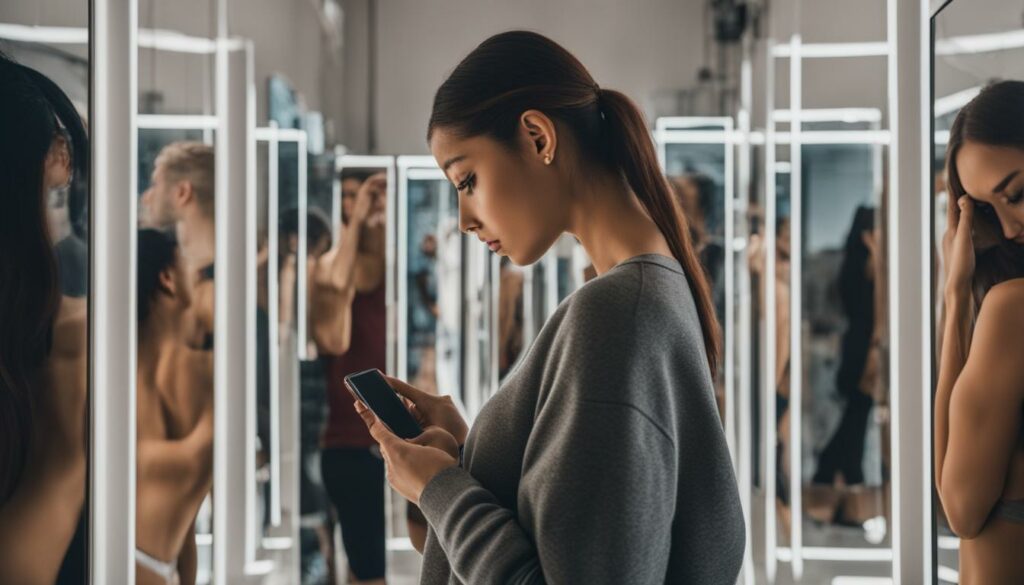
The Negative Effects on Mental Health and Self-Esteem
The influence of social media on body dissatisfaction can have profound effects on mental health and self-esteem. Constant exposure to idealized body images and the pressure to attain these standards can lead to feelings of inadequacy, low self-worth, and even the development of mental health disorders. Body dissatisfaction can also impact overall well-being, as it is closely tied to negative mood states and a diminished sense of self-esteem.
“Body dissatisfaction, especially among young women, is linked to mental health disorders such as eating disorders, depression, and anxiety.”
Promoting a Healthier Body Image
Despite the negative impact of social media on body dissatisfaction, there are ways to promote a healthier body image in the digital age. It is crucial to raise awareness about the unrealistic nature of beauty standards portrayed on social media platforms and encourage diversity representation. By challenging societal beauty ideals and promoting acceptance of all body types, we can create a more inclusive and body-positive online environment.
Harnessing the Power of Social Media for Positive Body Image
Social media has often been criticized for its negative impact on body image, but it also holds the potential to be a powerful tool for promoting body positivity and improving body satisfaction. By incorporating body positive content into users’ feeds, social media platforms can create a more supportive and inclusive environment for individuals of all body types and sizes.
“Viewing body positive content on social media can have a positive impact on body satisfaction and mood,”
Research has shown that exposure to body positive posts can induce positive effects on body image, reducing the tendency to compare one’s appearance with others and decreasing body dissatisfaction. Even viewing appearance-neutral content on social media can be beneficial for body image, as it helps to normalize diverse appearances and challenge unrealistic beauty ideals.
Promoting Diversity and Acceptance
One of the key ways social media can foster positive body image is by promoting diversity and acceptance. By featuring a wide range of body types, sizes, and appearances in their algorithms and content, social media platforms can help challenge societal beauty standards and encourage individuals to embrace their own unique bodies. Seeing content that accurately reflects the diversity of appearance in society can have a profound impact on individuals’ body image perceptions and self-acceptance.
Social media interventions aimed at promoting body positive content and improving body satisfaction are critical in creating a more inclusive and empowering online environment. By harnessing the power of social media, we can work towards fostering a healthy body image and promoting well-being and positivity in the digital age.
The Need for Further Research and Interventions
In order to truly understand and address the impact of social media on body image, further research and interventions are essential. While existing research has shed light on various aspects of this complex issue, there are still significant gaps that need to be addressed.
One important area of research that requires attention is body positivity. Future studies should explore the specific composition of body positive content that has the most significant impact on women’s body image. By understanding what type of content is most effective in promoting body positivity, we can develop targeted interventions and initiatives to improve body image on social media.
“Research gaps in body positivity research need to be filled in order to develop effective strategies that promote a healthy body image on social media.”
Furthermore, it is crucial to continue examining the relationship between social media use and body dissatisfaction, particularly in the context of adolescence. This is a formative period when body image concerns often arise, and addressing this issue on social media platforms can have a lasting impact on young individuals’ well-being.
By filling these research gaps and implementing targeted interventions, we can make significant strides in improving body image on social media platforms. It is our collective responsibility to ensure that social media becomes a space that promotes body positivity, acceptance, and diversity – ultimately fostering a healthier and more positive digital environment for all.
Conclusion
The influence of social media on body image is a complex and ongoing discussion. As we have explored, research indicates that social media can both positively and negatively impact body image perceptions. It is crucial that we foster a healthy body image on social media to promote well-being and positivity.
Adolescents employ various coping strategies to protect their body image while using social media. Girls, in particular, tend to be more negatively affected, while boys often perceive social media as a positive influence on their body image. By understanding these differences, we can tailor interventions and initiatives to address the specific needs of different genders.
A key approach to promoting a healthy body image on social media is by embracing body positivity and challenging societal beauty standards. Research shows that exposure to body positive content can improve body satisfaction and reduce body dissatisfaction. Incorporating diversity and inclusivity into social media platforms can create a less harmful environment for body image and help individuals develop a more positive self-perception.
While there is still much to learn about the impact of social media on body image, we must continue to strive for a better understanding. By conducting further research and implementing interventions, we can foster a healthier body image and promote positivity on social media platforms. Together, we can create a digital space that celebrates diversity and empowers individuals to embrace their unique beauty.
Can Starting a Gratitude Journal Help Break the ‘Likes’ for Looks Cycle and Foster a Healthy Body Image on Social Media?
Starting a gratitude journal for positivity can definitely help break the ‘likes’ for looks cycle and foster a healthy body image on social media. By focusing on the things we are grateful for, we shift our mindset away from seeking validation through likes and towards developing a positive self-image.

